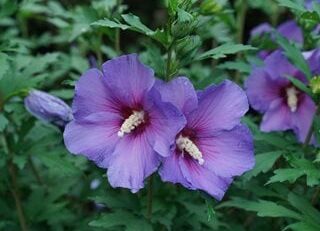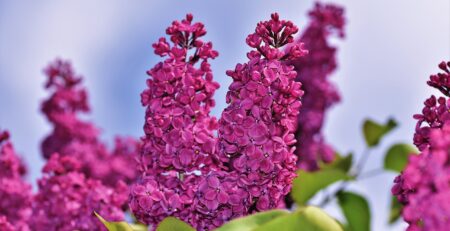Iris: The Flower Named after a Greek Goddess
The iris flower holds a special place in history, named after the Greek Goddess Iris, who was the personification of the rainbow and a messenger of information from the gods of Mount Olympus. In ancient Greece, irises were believed to be named after her due to their vibrant and diverse colors. It was customary to plant irises on the graves of women to summon the goddess and accompany the deceased on their journey to the afterlife.
The iris flower has made appearances throughout various periods in history. Its cultivation was first mentioned around 1469 BC when King Thutmose of Egypt brought iris plants back as spoils of war after conquering Syria. These plants were featured in Egyptian painted art and sculpture, adorning tombs and palaces.
The iris holds significance as an ancient symbol in many cultures. In European history, it was considered the national flower of France, representing nobility and chivalry. The iris is associated with royalty, as it was used by Clovis, the king of the Franks in 481, and later adopted as a symbol by Louis VII in the 12th century. The influence of the French fleur-de-lis, which features the iris, can still be seen today in New Orleans, Louisiana, the flag of Quebec, and even on the Coat-of-Arms of Florence, Italy. Additionally, the iris symbol has been used by English, Spanish, Romanian rulers, and Scottish Clans.
While around 30 iris species are native to the Americas, the first bearded irises in America were brought to Virginia in the 1600s by early settlers. Over the course of 400 years, irises have become a staple in modern American garden designs.
The iris flower has also left its mark in the art world, with famous painters often featuring it in their artwork. Vincent Van Gogh, a Dutch artist, painted Iris Germanica and possibly I. reticulata in the last year of his life. Irises were a popular motif in American Arts and Crafts era and Art Nouveau designs. In Japanese art, the iris, especially the large I. ensata, was frequently depicted alongside water elements on porcelain, pottery, folding screens, and kimono designs. The iris was even used on samurai armor and banners as a symbol believed to ward off demons. Woodblock prints from the Edo period showcased the iris as an element in ikebana designs, a centuries-old Japanese art of stylized flower arrangement.
Apart from its aesthetic appeal, the iris has had various practical uses throughout history. Greek physicians used iris for its medicinal properties, although it is not recommended today due to its toxicity to humans and animals, except for the rhizomatous rootstocks of Iris germanica and I. pallida. The dried and powdered rhizome, known as orris root, was used for making toiletries, incense, and as a flavoring agent for food. Orris root serves as a fixative in the fragrance industry, prolonging the scent of perfumes, potpourris, and incense. In ancient times, orris root was also used to flavor beer and wine. Even today, some modern gin brands use orris root for flavor and color. The root is also a key ingredient in Ras El Hanout, a Moroccan herb mixture used to flavor foods. Iris essential oil is used in aromatherapy and is known for its relaxing and regenerative properties.
In contemporary times, irises continue to be cherished for their beauty. Dutch iris, particularly the elegant and graceful I. hollandica, are commonly seen in arrangements and bridal bouquets. Siberian iris, available briefly in the spring, may also be used. The range of colors for Dutch irises includes dark purple, lavender, yellow, gold, bronze, rose, and white, with some varieties featuring a combination of different colored standards and falls. Dutch irises have a delicate, sweet fragrance, and their cut stems can last about a week.
The iris holds symbolic meaning as well. It represents valor, making it an ideal flower for hospital arrangements or military celebrations and memorials. Blue irises, when combined with white and red flowers, often represent the colors of the stars and stripes. Additionally, irises are commonly given as gifts for the 25th wedding anniversary.
Irises are particularly popular for early spring weddings. For a transcendent bridal bouquet, white irises can be tied together with white peony, baby’s breath, and white hydrangea. For a less traditional bouquet, pink and lavender roses can be combined with blue irises and blue eucalyptus. Irises also lend themselves well to creating elegant centerpieces.
The spiky and upright foliage of irises adds an interesting visual element to floral designs. They can be combined with large pink lilies, blue or lavender iris, or dark purple iris for stunning arrangements. Mixing yellow daisies with purple iris varieties that have a yellow signal on their petals creates a vibrant display. To capture the essence of spring, pink tulips can be paired with purple iris and fragrant hyacinth.
In the Japanese art of ikebana, which focuses on stylized flower arrangements, irises are frequently used. Ikebana aims to capture the essence of nature using minimal elements, and great care is taken in preparing the plant material before it is incorporated into the design.
To ensure the longevity of cut irises, it’s important to take proper care of them. Upon arriving home with a bouquet, immediately place the stems in water. Prepare a vase by dissolving a packet of flower food in cool water. Cut each iris stem diagonally and place it in the vase. Every few days, recut the stems, refill the vase with clean water and flower food. As the flowers begin to fade, remove them from the vase.
For gardeners, growing irises can provide an opportunity to create stunning bouquets. Bearded, Siberian, and Japanese irises make a dramatic statement when combined with other spring flowers such as alliums, baptisia, catmints, salvias, and varieties of white and pale pink yarrow. Wildflowers like lupine, spiderwort, and oenothera also complement irises well. Bearded irises often have an earthy fragrance reminiscent of musk, and some varieties have a sweeter scent. Bearded iris plants should be located in well-drained soil and receive about 6 hours of full sun. Proper watering techniques, such as avoiding overhead irrigation, can help prevent fungal leaf spot and bacterial rot.
When cutting irises from the garden, it’s best to choose a vase with some weight to support the top-heavy bearded iris. Clean the vase thoroughly and dissolve flower preservative in cool water. Cut the iris stems in the cool morning, after the dew has evaporated. Submerge the stem ends in room temperature water immediately after cutting. As the bearded iris stems age, the colors of the flowers may fade, giving them a softer look. To encourage the next flower down the stem to open as the top flower fades, remove the faded top bloom with sharp shears. Siberian irises often have a second bud on the same stem and can benefit from the same treatment. Be mindful that cut iris flowers may release color agents that can stain surfaces, so it’s advisable to place the vase on a plastic mat or non-porous surface.
Overall, with their rich history, cultural significance, and striking beauty, irises continue to captivate people’s hearts and remain an essential element in floral designs, art, and gardens. Whether as a symbol of nobility, a gift for special occasions, or a stunning addition to bouquets and arrangements, irises bring elegance and grace to any setting. With proper care and appreciation, these remarkable flowers will continue to enchant and inspire for generations to come.











